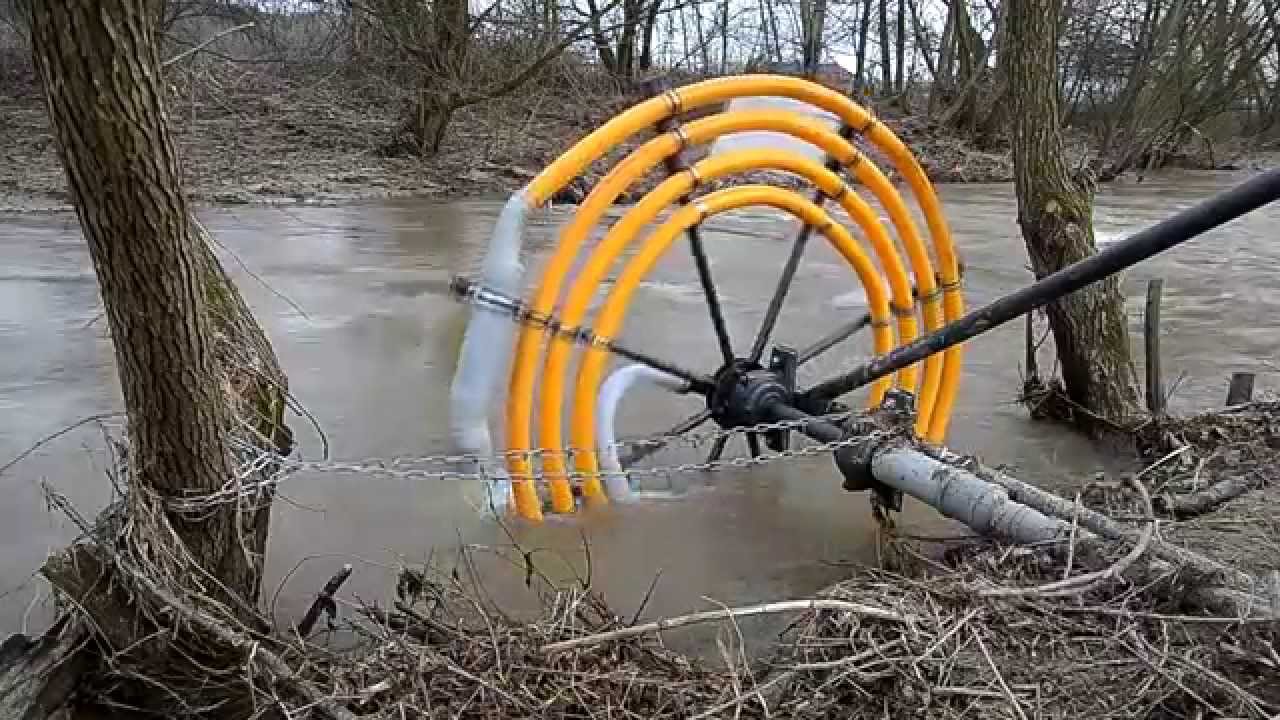A water wheel uses the energy of flowing water to move the water through coiled pipe and as it spins it continues adding water through the coils. Depending upon where you set the output pipes you can move water from a creek to your field without electricity.
This is a Wirtz water pump. With each revolution of the spiral, the scoop collects one-half the volume of the outer coil. As water is taken into the coils, each column of water moves under pressure to the next column of water. The water in each coil is displaced to provide a pressure head. And the cycle continues.
The water current moves through these coils. As the wheel turns, several small heads of water develop, one in each coil pushing water forward through all the coils.
When enough water pressure is inside, the total water volume moves and exits in cadence to the input…
Here’s a quick video showing it in action…

